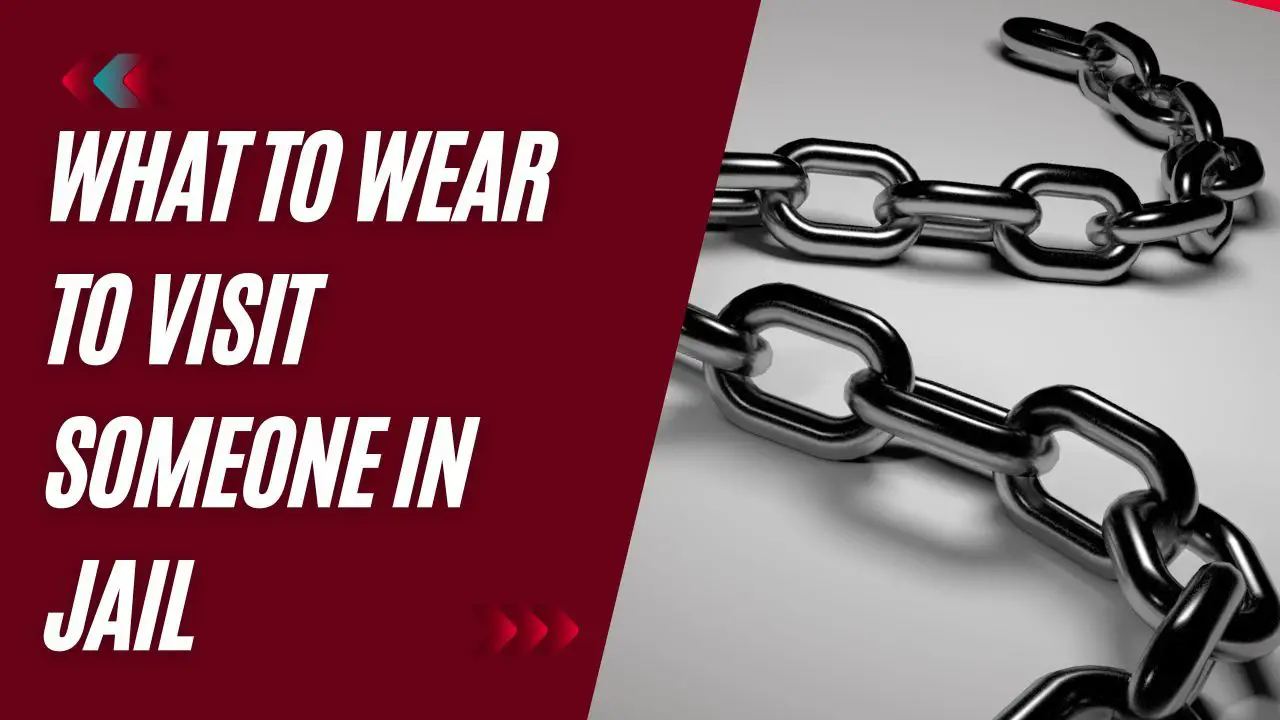What to Wear to Visit Someone in Jail: What Can I Wear to Go to a Maximum Security Prison?
What to Wear to Visit Someone in Jail: What Can I Wear to Go to a Maximum Security Prison? In this article we have listed everything you know about what to wear or not before you visit someone in the jail.

If you are visiting an inmate in jail, one of the first things you should consider the way you are dressing. It is not common knowledge that prisons have a strict dress code and set of guidelines for visitors to follow before they are allowed to see the offender. While the standard is somewhat the same in all security levels, whether minimum, medium or maximum, of the prison, there are some points that must be remembered especially in the case of maximum security prisons.
Maximum Security Prisons
Levels III and IV are considered maximum security prisons. A maximum-security prison typically houses incarcerated offenders with long sentences or transferees who have serious disciplinary issues.
A person incarcerated in a maximum-security prison may have a job within the prison, such as kitchen, laundry, clerical, or library jobs. Some in maximum security are allowed only brief periods outside of their cells. Because of prison overcrowding, many inmates must share a cell with at least one other person. In some cases, even the people housed in solitary confinement ended up having a cellmate. Under ideal conditions, many people would not be confined to a cell with another inmate.
Maximum-security prisons house offenders with huge criminal records. The criminals here, have a violent criminal history or have committed violent crimes while incarcerated. These offenders need the most security and pose a threat to other inmates, prison guards, and society as a whole.
How to visit an Inmate at a Maximum Security Prison
If you are planning to visit someone at a maximum security prison, you should make some preparations beforehand. First of all, you will need to locate the inmate. Inmates, especially at maximum security prisons, are moved around a lot and you might be at a loss to find you arrived at the wrong facility if you don’t do your homework.
To locate them, you’ll need to know their credentials. You can either call the facility where they are incarcerated or visit the official websites of the facilities. Once you’ve located them, plan ahead. Book a visiting hour and look out for the rules and regulations set out by the particular facility. Remember all the instructions and try to be on time for your meeting session.
What to Wear
As mentioned before, you will need to be extra careful with what you wear to your meeting. Below are a few guidelines for you to follow on what you should wear.
- All visitors are required to wear shoes at all times during their visit. (except babies)
- Men must wear a shirt and full-length pants when visiting an inmate.
- Women can wear full-length pants, a dress, or a skirt. However, the dress and the skirt must not be any more than two inches above the knee.
- All visitors, men, and women, must wear appropriate underwear to the meeting.
- Some visitors report that certain facilities require a collared shirt to be worn by visitors.
- Kids that are visiting, may wear shorts but they must not be more than 12 years of age.
Note that children are only allowed to visit if they are accompanied by an adult or guardian. Moreover, all minors (those under 16 years of age) must bring their birth certificate along while visiting an inmate.
What not to Wear
The list of what not to wear goes a long way. The simple goal is to be conserved in your dressing and try to wear neutral and decent clothing. Following are some of the guidelines you will need to follow before visiting an inmate.
- Visitors must not wear revealing shorts. Women cannot wear short dresses and skirts either.
- See-through and sheer garments of all kinds are strictly prohibited. Net or mesh webbing is also not allowed.
- Halter tops, crop tops, and bathing suits are not allowed for any visitor.
- Low-cut blouses, miniskirts, and dresses are not allowed to be worn.
- Leotards, spandex, yoga pants, and unitards are not allowed.
- Backless tops and sleeveless garments are not allowed.
- Any dresses or skirts that have a high-cut split in the back, front, or side are also prohibited.
- Clothing that resembles the inmate’s clothes is not allowed.
- Uniforms like military uniforms, nurses, etc. are not allowed.
- Tube tops and tank tops are also not allowed.
- Tops that include thin straps or reveal the chest, shoulder, midriff, or back are also prohibited.
- Hooded garments are strictly prohibited.
- Hats and other head coverings are not allowed. (except religious coverings)
- Clothing identifying a specific gang by name or logo is not allowed.
- Clothing that makes explicit reference to obscene language, drugs, sex, or violence is prohibited.
- Jewelry (excluding a wedding ring and one religious medal no more than two inches in diameter hung on chains of one-quarter-inch or less in diameter and no longer than 24 inches) is not allowed.
- Outer garments including coats, shawls, ponchos, jackets, vests, gloves, or over-boots or overshoes (outer boots or shoes that slip over other shoes) are not allowed.
- Flip-flops are prohibited.
- Wearing camouflage clothing or colors that are representative of local gangs or controversial movements is not allowed.
What happens if Dress Code is not followed
Visitors report a number of predicaments that might follow if the proper dress code is not followed. Most prisons ask visitors to bring an extra pair of clothing with them in their cars. In case one is subject to rejection, they can quickly change to the other one. If both pieces of clothing are denied, visitors will be offered clothes by the facility. If the visitor refuses to accept them, they will be denied the visit.
For these reasons, visitors are asked to arrive at the facility at least 30 minutes prior to the visitation. Visitors are not allowed to reenter the visiting room once they have left. Make sure to use the bathroom in the lobby and gussy up before seeing the inmate.
Accessories
Just as you are expected to follow the dress code strictly, there are some other accessories that you might think are ok to bring with you but really they are not.
Generally, no items other than your ID card, a single car key, and a maximum of $20 in coins can come with you into the facility. Some maximum security prisons do not allow bringing money with you inside the visitation room. All other items, cell phones, radios, cameras, and other electronics are not allowed to come with you.
If you are traveling with a small child or baby you may be allowed to bring other items such as a single clear plastic baby bottle, diaper, and sealed formula. You will need to contact the individual institution for more specific information since some maximum security prisons do not allow babies and children in the facility whatsoever. This is especially the case with most correctional facilities.
You cannot bring any type of drugs, either medicinal or otherwise to the facility. Tobacco is strictly prohibited and you cannot smoke in the facility. Any sharp object like a multitool, nail sharpener, or jewelry is not allowed.
Most maximum security prisons consider visitors’ rights a privilege. If you fail to keep up with the standard, there is no reason they should not deny you your meeting.
You can also read articles related to this topic;
- Phillips State Prison: Visiting Information, History of This Facility, Inmates Phone, Mail, And FAQ About This Prison
- Pickaway County Active Inmates: How to search for Active Inmates of Pickaway County Prison
- Trumbull County Jail: Brief Overview Visiting Hours, Inmate Phones, And Sherif's Location
- Worst Prisons In The State Of West Virginia
- Marion County Inmate Roster: Complete Information, Sheriff's Office, Visiting Hours
- Pickaway County Active Inmates: How to search for Active Inmates of Pickaway County Prison
- Trumbull County Jail: Brief Overview Visiting Hours, Inmate Phones, And Sherif's Location
- Worst Prisons In The State Of West Virginia
- Top 7 Worst Federal Prisons In The United States
